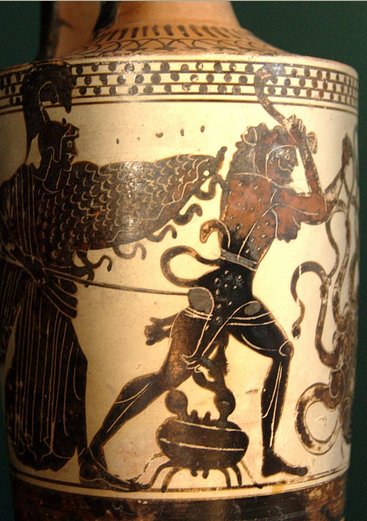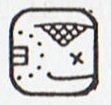So far I have not been able to securely coordinate the C text with the heliacal star map and dates proposed for the G text. The variant of rain (ua) in Cb4-20 could, however, be a parallel to the somewhat similar Ga2-26. Although, Altair (α Aquilae) rose 3 days earlier than τ Aquilae:
Possibly 0h was located 3 days later in the C text. Or better, maybe 0h was 3 days too early in the G text: ... Gregory dropped 10 days to bring the calendar back into synchronisation with the seasons. Accordingly, when the new calendar was put in use, the error accumulated in the 13 centuries since the Council of Nicaea [325 A.D.] was corrected by a deletion of ten days. The Julian calendar day Thursday, 4 October 1582 was followed by the first day of the Gregorian calendar, Friday, 15 October 1582 (the cycle of weekdays was not affected) ... So the shift in the date of the equinox that occurred between the 4th and the 16th centuries was annulled with the Gregorian calendar, but nothing was done for the first four centuries of the Julian calendar. The days of 29 February of the years AD 100, AD 200, AD 300, and the day created by the irregular application of leap years between the assassination of Caesar and the decree of Augustus re-arranging the calendar in AD 8, remained in effect ... Gregory dropped 10 days to bring the calendar back into synchronisation with the seasons. Accordingly, when the new calendar was put in use, the error accumulated in the 13 centuries since the Council of Nicaea was corrected by a deletion of ten days ... First 4 centuries / 13 later centuries * 10 days adjustment = 3 days difference. Regula de tri. The 3 leap days in 100 A.D., in 200 A.D., and in 300 A.D., were left intact in time-space. When the Sun reached 0h in March 21 it would have been to arrive at such heliacal stars which rose 3 days earlier than according to a correctly adjusted Julian calendar:
March 21 + 3 = March 24 (83). According to the Gregorian calendar heliacal Altair would therefore be expected not 300 days but 297 days after equinox, i.e. 3 days too early, in January 15 instead of in January 18 (383). By shifting the dates ahead with only 10 days instead of with 13 days, the heliacal stars would not be properly placed in the calendar. Precession had pushed them a further 3 days into the year and measured from 0h their distances became to short. The adjustment from the Julian equinox date March 25 [325 as in the Council of Nicea] to Gregorian March 21 in a way caused an opposite effect with 4 days, but this adjustment referred to the path of the Sun and not to the positions of the fixed stars. Therefore τ Aquilae should properly follow not in January 21 (386) but in January 18 (383) - as if this star above the head of Antinous was the leader of the Eagle:
The heart of the Eagle (α) came before its head (τ) - a sign of reversal. ... When the man, Ulu, returned to his wife from his visit to the temple at Puueo, he said, 'I have heard the voice of the noble Mo'o, and he has told me that tonight, as soon as darkness draws over the sea and the fires of the volcano goddess, Pele, light the clouds over the crater of Mount Kilauea, the black cloth will cover my head. And when the breath has gone from my body and my spirit has departed to the realms of the dead, you are to bury my head carefully near our spring of running water. Plant my heart and entrails near the door of the house. My feet, legs, and arms, hide in the same manner ... Reassuring is the heliacal date MAY 16 (136) at hanau (birth) in Cb4-23, where we could count (14 + 4) * 23 = 414 = 14 * 29½ + 1:
"Vainamoinen set about building a boat, but when it came to the prow and the stern, he found he needed three words in his rune that he did not know, however he sought for them. In vain he looked on the heads of the swallows, on the necks of the swans, on the backs of the geese, under the tongues of the reindeer. He found a number of words, but not those he needed ..." (Hamlet's Mill) We recognize the general situation: ... They go inland at the land. The child nursed and tended grows up, is able to go and play. Each day he now goes off a bit further away, moving some distance away from the house, and then returns to their house. So it goes on and the child is fully grown and goes to play far away from the place where they live. He goes over to where some work is being done by a father and son. Likāvaka is the name of the father - a canoe-builder, while his son is Kiukava. Taetagaloa [not-Tagaroa] goes right over there and steps forward to the stern of the canoe saying - his words are these: 'The canoe is crooked.' (kalo ki ama). Instantly Likāvaka is enraged at the words of the child. Likāvaka says: 'Who the hell are you to come and tell me that the canoe is crooked?' Taetagaloa replies: 'Come and stand over here and see that the canoe is crooked.' Likāvaka goes over and stands right at the place Taetagaloa told him to at the stern of the canoe. Looking forward, Taetagaloa is right, the canoe is crooked. He slices through all the lashings of the canoe to straighten the timbers. He realigns the timbers. First he must again position the supports, then place the timbers correctly in them, but Kuikava the son of Likāvaka goes over and stands upon one support. His father Likāvaka rushes right over and strikes his son Kuikava with his adze. Thus Kuikava dies. Taetagaloa goes over at once and brings the son of Likāvaka, Kuikava, back to life. Then he again aligns the supports correctly and helps Likāvaka in building the canoe. Working working it is finished ... The distance from Aldebaran (Ana-muri) to Antares (Ana-mua) had changed through the millenia:
... Antares would in 3000 B.C. have risen heliacally in day 80 (March 21) + 178 = 257 (September 14) ... These 3 'missing runes' (= 181 - 178) could have referred to not finding them in the ancient descriptions of the night sky. Where were they? Perhaps they were between day 178 (= 6 * 29½ + 1) and day 181 (June 30 at Sirius)? ... 'Tell us a story!' said the March Hare. 'Yes, please do!' pleaded Alice. 'And be quick about it', added the Hatter, 'or you'll be asleep again before it's done.' 'Once upon a time there were three little sisters', the Dormouse began in a great hurry: 'and their names were Elsie, Lacie, and Tillie; and they lived at the bottom of a well — ' ... I think these 3 sisters were invisible because they were at the bottom of a well. Furthermore, they lived on treacle - down there the flow of time was next to standing still. In the Mayan structure the first 20-day month beyond high summer was Ch'en - a well: ... The sign cauac, wherever it could be pinned down, appeared as a sort of general time-count base.
Alone, or with the wing-affix ... and with numerals, it is a fixed variant for the Tun-sign. This Morley was the first to verify. It is also the common element in the four vinal signs for Ch'en, Yax, Sac, Ceh, differentiated only by their superfixes. Ch'en means Well; Yax and Sac means Green, White; and the superfixes are the characters fully established for those colors. The superfix for Ceh means Red, but the Maya and Quiché Ceh, Quieh, mean Deer ...
Gregory XIII maybe realigned the timbers of his calendar with 3 days in order to push Antares 3 nights further ahead in the year, as compared to its ancient position. Or could he have moved Aldebaran 3 days earlier in the year? At any rate we can deduce that the Eagle glyph in Gb4-20 is a more original picture than that in Ga2-26, because in the latter image there is an added sign (a broader finger vaha at top left):
|
|||||||||||||||||||||||||||||||||||||||||||||||||||||||||||||||||||||||||||||||||||||||||||||||||||||||||||||||||||||||||||||||||||||||||||||||||||||||||||||||||||||||||||||||||||||||||||||||||||||||||||||||||||||||||||||||||||||||||||||||||||||||||||||||||||




























